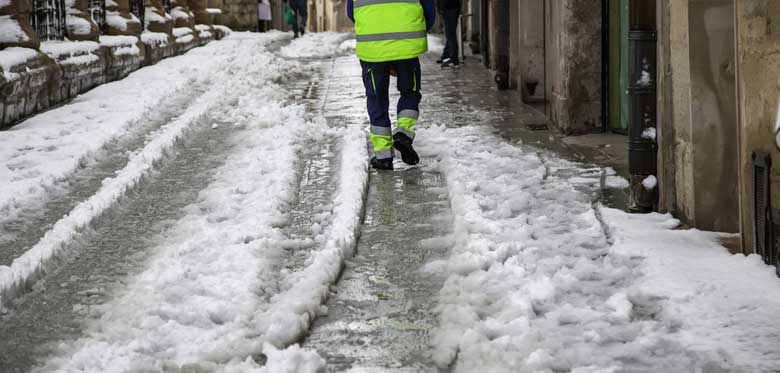UK winters are no joke. From November through to February, and even beyond those months, if you are working outside, the chances are that you are going to encounter bleak weather conditions. OK, your employer can’t alter the weather, but are they doing everything that they should be doing to keep their workforce safe?
There are any number of occupations which would require a person to be outside at least some of the day. Is your employer monitoring the weather, to put such measures in place? Remember, prevention is always better than cure! Highways England and the Met Office are just two organisations which provide up to date information on weather conditions. Your employer should ideally have an adverse weather policy or risk assessment, so that when it does become obvious that the temperatures are going to drop to levels which could potentially pose a hazard, they put appropriate measures in place to deal with those hazards.
The obvious one is snow and ice. Does your employer have a store of grit or rock salt for scattering around outside working areas, walkways and paths? Remember that some of this material does not instantly dissolve the snow and needs time to work, so deploying it at the right time is crucial. If certain outside areas are always going to be badly hit by ice, due to them being in the shade, then your employer should consider marking out alternative walking routes with cones, hazard signs etc.
What about mud, grass and decaying leaves? There should be a system in place to remove any transient defects (such as leaf fall in autumn months) from areas where there is foot traffic on your employer’s site, and if is not possible to install proper pathways, then temporary paths using appropriate non-slip materials need to be used to divert foot traffic away from muddy areas.
It seems obvious, but when walking indoors from an outside area (such as a delivery yard etc.), there should be something on the floor to catch any excess rain water brought in on an employee’s feet. Absorbent matting, non-slip flooring near a building entrance, or even an outside mat under a sheltered entrance can help. Your employer should make sure that the mat itself is in good condition, and does not actually form a trip hazard.
Is the lighting around the workplace sufficient so that employees moving around can identify and thus avoid any hazards on the floor themselves? This again is something that a risk assessment should be carried out on, taking into account the lighting at different times of day.
Whilst there will always be instances where unforeseen circumstances cause accidents, your employers do have a duty to protect you whilst at work, and some simple measures can go a long way to ensuring that their workforce remains healthy and safe. The HSE and RoSPA are just two organisations which can provide employers with practical tips and information to put preventative measures in place.
If you have been injured at work, and would like some information on what you can do about this, then please contact Stephensons’ personal injury solicitors, who will be happy to help and guide you through any claims process.




Comments